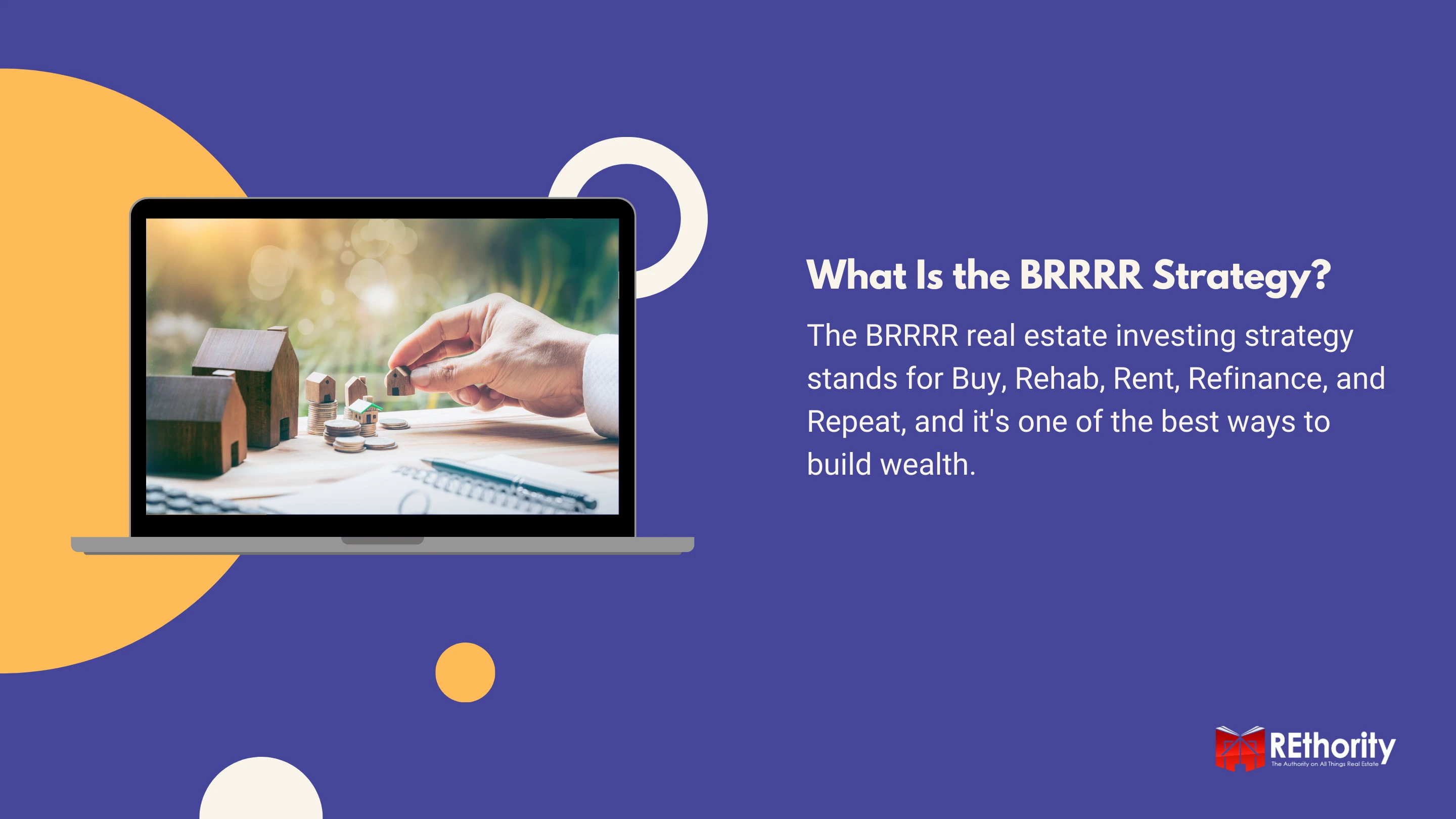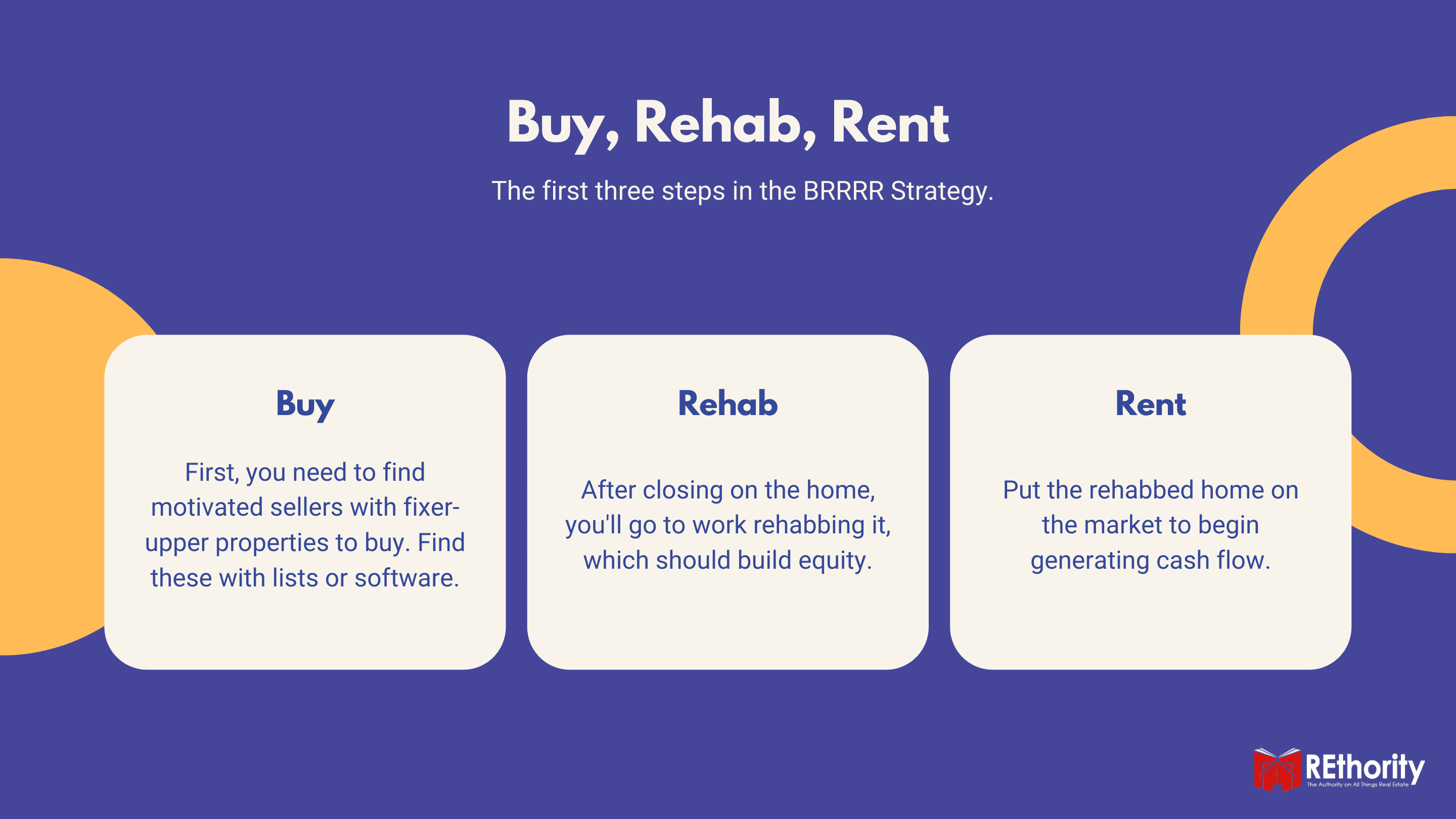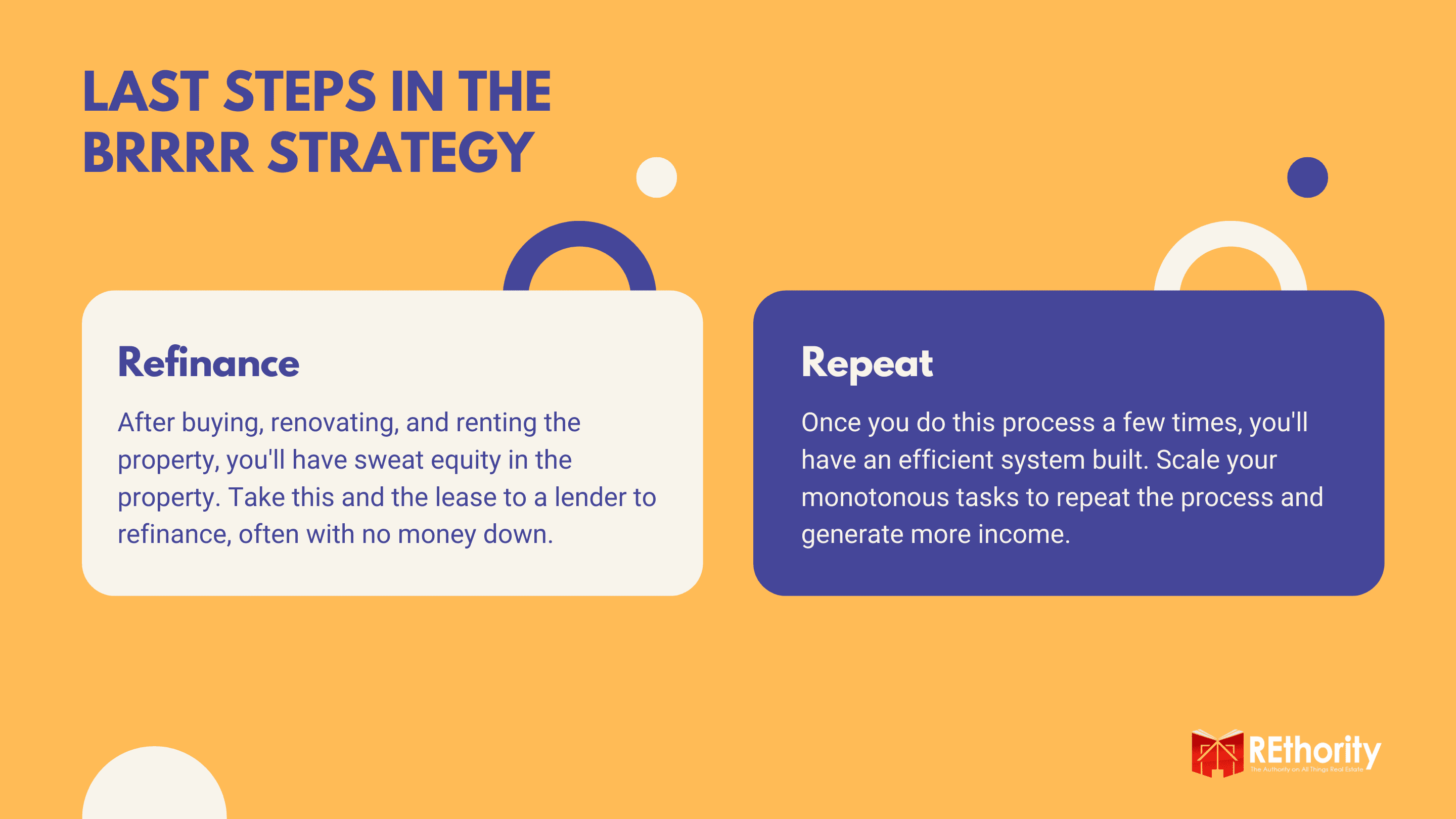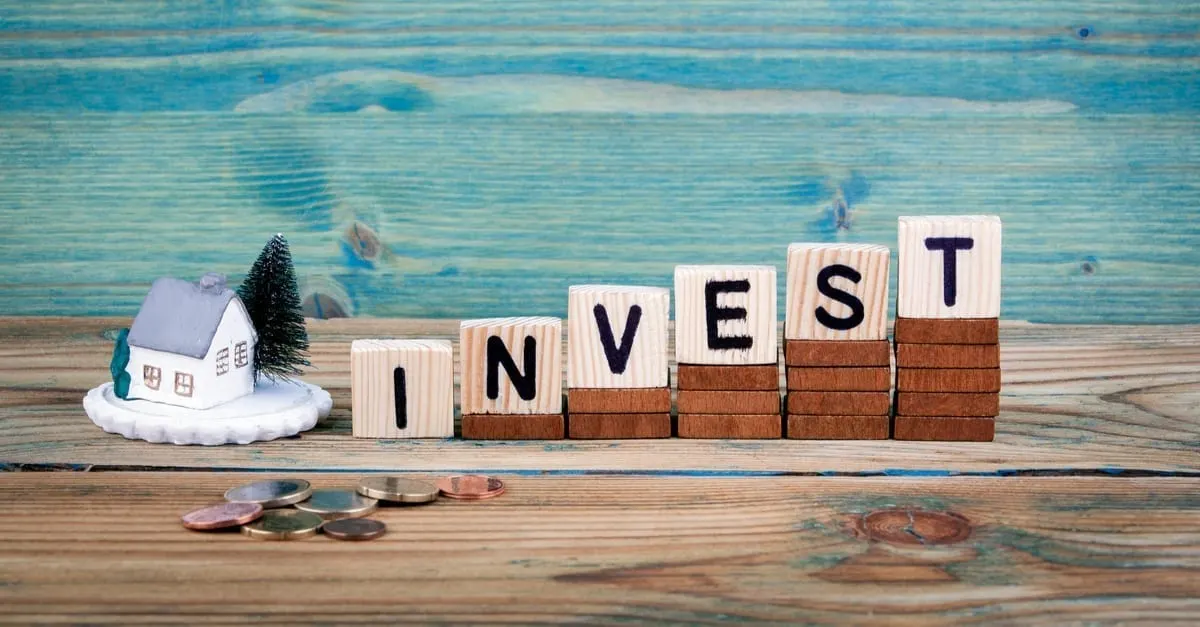If you’re a real estate investor beginning to build a residential portfolio, one of the first walls you’ll likely hit is running out of cash for down payments.
It’s frustrating to have money tied up in properties that aren’t producing the kind of cash flow you need at the pace you’d like. For this situation, there’s no better strategy than BRRRR.

The BRRRR strategy is a 5-step investment method that turns fixer-uppers and investment property into tools that can quickly give you more cash for down payments.
This, in turn, helps you build your residential portfolio faster with more positive cash flow every step of the way.
Let’s talk about the BRRRR method, what each step consists of, and how you can build out your residential portfolio in record time with this effective strategy.
What Is the BRRRR Strategy?
The BRRRR real estate investing strategy is based on the BRRRR acronym. BRRRR stands for Buy, Rehab, Rent, Refinance, and Repeat.
Simple, right? These 5 words can be the key to making low-cost investment properties in need of work quickly pay off. We’ll look at each letter as a step in the investment process to show why it’s such an effective method.
There’s a slight twist that makes it different from the familiar “fix and flip” strategy.
Buy
The first step is buying a property in need of repairs. You need to be able to initially put money down (your down payment and the costs of repairs and improvements) and make mortgage payments each month while you rehab and renovate the property.
Look for homes advertised as handyman specials, fixer uppers, or investor’s specials to quickly locate properties priced below their true market value.
They’ll be less costly up front. But they’re going to require some investment to start bringing you positive cash flow.
If you have a property manager who’s keeping an eye on your local real estate market, they can help you plan and target the improvements that will have the best effect on the home’s value.

Rehab
Naturally, the next step in the BRRRR strategy is rehabbing—making the repairs, fixes, and improvements your property needs. You can’t skip this step if you want the strategy to be effective.
Make the improvements and repairs that will be attractive to renters and increase the market value of the property (and have them done by a trusted, insured contractor).
You might replace windows, install a new roof, repaint, put in hardwood floors, or add a deck to increase the home’s value. Then you have an appraiser determine the new value of the property later in the process.
You’ll be relying on the new appraisal value to be considerably higher than your initial purchase price and investment. These improvements and repairs are the key to making that happen.
Rent
With the repairs and improvements made, you’re ready to rent the property out to tenants and begin getting some cash flow in the form of rental income.
A property management company can list the home for rent, find and interview good rental applicants for you, and essentially act as your stand-in landlord for the duration of the rental period.
If you decide to handle it yourself, the process can take a little longer. Once the home has been rented to tenants you trust, it’s time to focus on the next step: refinancing.

Refinance
Refinancing is the cornerstone of the entire BRRRR method. It’s where everything comes together, and your repairs and improvements have a concrete effect on the value of the property.
You’ll use a cash-out refinance to put money back in your hand from the repairs and improvements you’ve made to the rental property (i.e., increased its value and appraisal).
You might be able to get back your entire down payment plus repair costs, but the amount of cash you can take out at this point depends on two things:
- The new appraisal value, according to the bank
- Whether or not you’re locked into a seasoning period
The bank or lender you’re refinancing through will have the property appraised, and whatever they say the value is—even if you disagree—is what they’ll use when determining how much to refinance the property for.
It’s possible you’re locked into a seasoning period where you are required to rent the home for a period of time before you can refinance.
Mark Ferguson of InvestFourMore explains, “Most banks will not complete a cash-out [refinance] right after you buy the home. Some banks have 6-month seasoning periods, some a year, and some will have none.”
Check with your lender early in the process to find out if there’s a seasoning period and its length. You might get stuck renting the home for up to a year before you can take cash out.
Repeat
After you’ve successfully completed a cash-out refinance, you’ve reached the final step of the BRRR strategy: Do it all again! Use the money from refinancing to put money down on another rental property you can score a good deal on.
Repetition is the key to making this investment strategy an effective way to build wealth.
Why the BRRRR Strategy Works
This method works because it’s an effective cycle:
- Purchase a property below its market value
- Renovate and make repairs that increase value
- Rent the property to reliable, responsible tenants
- Cash-out refinance to access cash for your next down payment
- Repeat the process again
With every pass, you end up pocketing more cash. You increase your investing potential by having enough cash flow to make down payments on new properties.
You’ll also continually increase the property value of each investment you make.
Should You Use the BRRRR Strategy?
That’s the beauty of the BRRRR strategy for real estate investors.
Every success creates another opportunity to build more wealth, earn passive income, and grow your portfolio.

